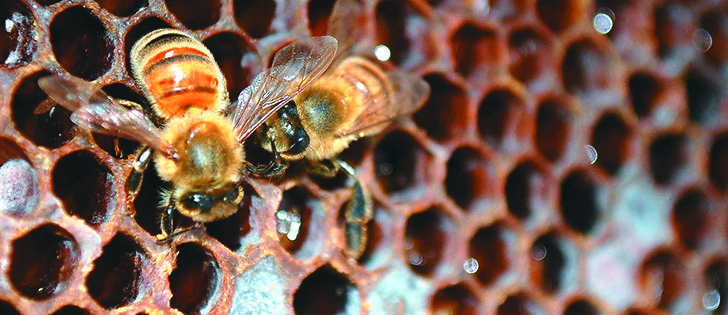Insecticide problems piling up | In a new study, two neonicotinoid insecticides are shown to increase vulnerability to deformed wing virus
DRESDEN, Ont. — Many beekeepers have accused neonicotinoids of killing their tiny charges, but evidence is now showing that the insecticides are linked to other bee health problems as well.
Neonicotinoid clothianidin adversely affects insect immunity and promotes reproduction of a viral pathogen in honeybees, eight Italian scientists wrote in the October edition of the Proceedings of the National Academy of Sciences of the United States journal.
“A neonicotinoid insecticide compromises the immune system of the honeybee,” said Gene E. Robinson, an entomologist and honeybee genomics specialist from the University of Illinois who edited the article.
Read Also

Volunteers help exotic animal farm rebuild
Exotic animal farm loses beloved camel and pony to huge hail storm that gripped the Brooks, Alta. area as a community member starts a fundraiser to help the family recover from the financial and emotional damage.
“This paper certainly would motivate additional research to see how widespread the problem might be, especially under natural beekeeping conditions, in different parts of the world.”
The study explored the impact of clothianidin and imidacloprid on bee immunity to deformed wing virus (DWV) at a wide range of exposure levels. This included exposure levels as small as one thousandth of LD50, which is the exposure rate at which a toxin will kill half the members of a tested population.
Exposure to the organophosphate insecticide chlorpyrithos was also part of the experiment, which divided newly emerged bees into groups of 30. It was conducted under laboratory conditions.
DWV, a common virus affecting honeybees, is associated with the parasitic mite varroa destructor, which can easily spread the virus within colonies. Infected larvae typically have deformed wings when they emerge as adults and soon die.
The varroa-DWV disease complex has often been described as the No. 1 challenge for honeybee producers.
The study’s authors found that the two neonicotinoids appear to compromise the immune response of bees to DWV, adding another layer of stress to colonies.
“Collectively, our data demonstrate that two neonicotinoid insecticides, each representing one of two alternative structure types in the group of nitroguanidines, actively promote DWV replication,” the paper said.
In addition, the researchers suspect that the immunity alternations may also affect gut microbial pathogens in bees, further affecting bee health.
“Indeed, pathogen proliferation induced by insecticides can cause additional mortality, even at sub-lethal doses, and may contribute to the observed negative influence of some insecticides, or their mixtures, on bee longevity and colony stability,” it said.
“The results we report clearly indicate the need for longer-term toxicity tests, aiming at assessing how the pathogen progression in honeybees is influenced by insecticide residues and by their cumulative effects, both on adults and larvae.”
The authors of the paper are Gennaro Di Presco, Valeria Cavaliere, Desiderato Annoscia, Paolo Varricchio, Emilio Caprio, Franceso Nazzi, Guiseppe Gargiulo and Francesco Pennacchio, who work with Italian universities in Napoli, Bologna and Udine.
Ernesto Guzman, head of the Honey Bee Research Centre at the University of Guelph, expressed confidence in the research, given the stature of both the journal and its editor.
“The content of the abstract makes absolute sense to me, and they followed a novel approach to show a cause-effect type of reaction,” Guzman said.
Clothianidin and imidacloprid are used widely in agricultural and consumer products. In agriculture, they may be best known for their use in systemic seed insecticides for a broad range of crops including canola, corn, soybeans and wheat.
The registration of both products, along with thiamethoxam, is under review in Canada and the United States.

















